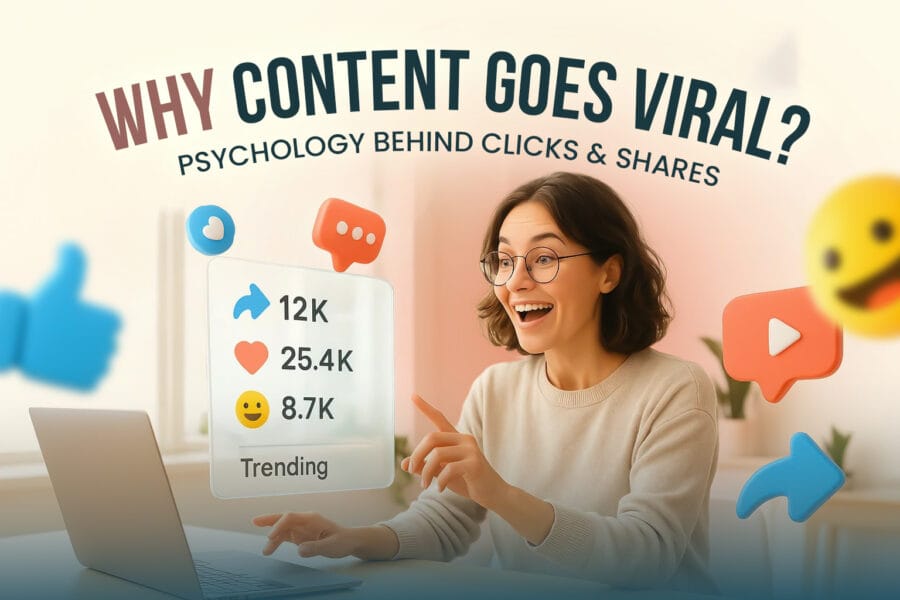
In the ever-evolving world of digital marketing, going “viral” has become the ultimate goal for brands, creators, and marketers alike. But what exactly makes content go viral? Is it luck, timing, or is there a deeper psychological pattern driving these rapid spikes in shares and clicks?
In this article, we explore the psychology behind viral content and what triggers people to engage, click, and share. Whether you’re a digital marketer, a content creator, or a business owner, understanding these psychological triggers can help you create share-worthy content that drives traffic and brand awareness.
1. Emotional Triggers: The Heart of Shareability
One of the strongest drivers behind viral content is emotional impact. According to a study by the New York Times, people share content that elicits a strong emotional response, whether it’s joy, surprise, anger, awe, or even sadness.
Why it works: Emotionally charged content creates a sense of connection. When people feel something deeply, they’re more likely to share it to express themselves or to connect with others.
Tip: Focus on storytelling. Craft narratives that tug at emotions, inspire, or entertain your audience.
2. Social Currency: People Share to Look Good
We share things that make us look smart, funny, or informed. This concept is known as social currency.
Why it works: When people share valuable or entertaining content, it elevates their status within their social circles.
Tip: Create content that offers unique insights, surprising facts, or clever humor. Make your audience feel like they’re in on something special.
3. Visual & Snackable Content Performs Better
In a world flooded with information, bite-sized content with strong visuals captures attention faster.
Why it works: Our brains process visuals 60,000 times faster than text. Quick videos, memes, infographics, and carousel posts get more engagement and shares.
Tip: Invest in high-quality design, short-form videos, and eye-catching visuals for platforms like Instagram, TikTok, and Facebook.
4. Relatability: “This Is So Me!” Effect
Content that mirrors people’s daily life, struggles, or thoughts often goes viral because it strikes a personal chord.
Why it works: When content reflects your audience’s identity, it fosters connection and encourages sharing.
Tip: Use humor, trends, and scenarios that your target audience experiences regularly. Relatable content = shareable content.
5. Trigger-Based Sharing: Be Top of Mind
Certain types of content become part of daily conversation because they’re connected to regular routines, trending topics, or timely events.
Why it works: The more your content aligns with what people are already thinking or talking about, the more likely it is to be shared.
Tip: Leverage trending hashtags, seasonal events, or pop culture to make your content timely and searchable.
6. Call-to-Action and Community Building
Sometimes people need a little nudge. Adding clear calls-to-action like “tag a friend,” “share your story,” or “DM us your thoughts” encourages engagement.
Why it works: It turns passive viewers into active participants, and creates a ripple effect of sharing.
Tip: End your content with a question, challenge, or CTA to boost interaction.
Final Thoughts: Crafting Content That Clicks
Creating viral content isn’t just about luck. It’s about understanding human behavior, emotions, and social motivations. By applying these psychological principles, you can increase your chances of creating viral social media posts, shareable Instagram reels, or high-traffic blog content that resonates deeply with your audience.
In the competitive world of content marketing, remember: people don’t share ads. They share emotions, identity, and stories.Looking to create content that clicks, converts, and compels? Let Creative Scope help you go viral for all the right reasons.






